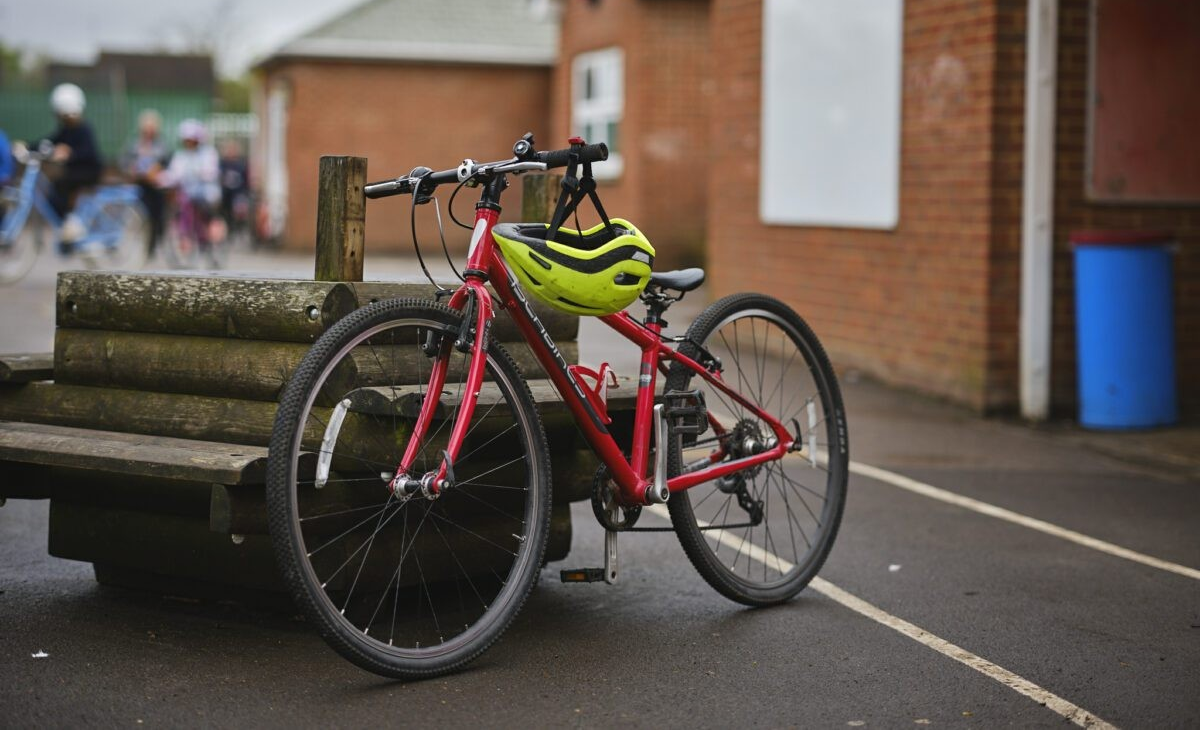Regular maintenance is crucial to keeping your cycle running smoothly, whether you’re commuting, cycling for fun or your children are at the start of their cycling journey. A well-maintained cycle not only lasts longer but ensures a safer and more enjoyable ride. Take a look at our weekly, monthly and yearly maintenance checks below to help you stay on top of your cycle’s upkeep.


Weekly maintenance
Weekly cycle checks are quick and easy but go a long way in preventing bigger issues later. Here are some tasks to do every week:
1. Check tyres
Tyres are one of the most important parts of your cycle. Regularly check for any punctures, cuts or excessive wear. Ensure the tyres are properly inflated to the correct pressure (usually marked on the tyre side). Under-inflated tyres can slow you down, while over-inflated ones can cause punctures more easily.
2. Inspect the brakes
Your brakes are vital for safety, so test them every week. Make sure the brake levers feel firm and responsive. If the levers feel too soft or the brake pads look worn down, it might be time to adjust or replace them.
3. Lubricate the chain
A smooth chain ensures a smooth ride! Apply a cycle-specific lubricant to the chain and wipe off any excess. This reduces friction and wear, which helps prevent chain issues later on.
4. Check the gears
Shift through all the gears to make sure they are working smoothly. If the chain skips or doesn’t shift properly, it could be time for an adjustment.
5. Inspect lights and reflectors
If your cycle has lights, check that they’re working. Clean your reflectors too, ensuring they’re visible to others on the road. A quick check of your lights and reflectors can make a big difference in your visibility and safety.
6. General visual check
Finally, give your cycle a general once-over. Look for any loose bolts, cracks or parts that seem worn. Tighten up any bolts and make sure the cycle is in safe condition before heading out.


Monthly Checks
While weekly checks cover the basics, monthly maintenance allows you to tackle things you might miss in a quick weekly review. Spend a little more time once a month to ensure everything is in top shape.
1. Clean the cycle
Dirt and grime can cause wear. Use a soft brush and soapy water to clean your cycle, then dry it thoroughly. Avoid using high-pressure water as it can force moisture into parts that need to stay dry. After cleaning, re-lubricate the chain.
2. Tighten bolts
Over time, bolts can become loose from regular use. Tighten all major bolts, especially those on the wheels, handlebars and pedals.
3. Check the wheel hubs
Lift each wheel and spin it to listen for any unusual noises. Grinding or rough spinning could indicate issues with the hubs or bearings. If you hear anything strange, it’s worth getting a professional to take a look.
4. Inspect the pedals
Pedals go through a lot of wear and tear, so check that they’re securely attached and rotate smoothly. If they feel stiff or noisy, consider lubricating the pedal bearings or replacing the pedals.
5. Headset check
The headset connects the handlebars to the front fork. To check it, hold the front brake and gently wiggle the handlebars. If it feels stiff or wobbly, the headset may need to be adjusted or lubricated.


Annual maintenance
Annual checks go beyond regular upkeep. They allow you to catch any issues that may be developing over time and prevent long-term damage. Here’s what to focus on during a yearly check:
1. Professional tune-up
Consider bringing your cycle to a professional mechanic for a full tune-up once a year. They’ll take care of more detailed tasks like adjusting the wheel hubs, checking the bottom bracket and realigning the handlebars. These tasks that can be tricky to do on your own.
2. Replace brake pads
Brake pads wear down with use, so be sure to check them annually. If they’re worn to the indicator lines or feel less responsive, it’s time for a replacement. Your mechanic can help you with this during the annual service.
3. Replace the chain
A worn chain can cause shifting problems and increase wear on other parts of the drivetrain. If your chain is stretching or showing signs of wear, it’s time to replace it. This will help prevent further damage to other parts of your cycle.
4. Check for rust or corrosion
If you’ve been cycling in wet conditions, rust can form on parts of your cycle. Regularly check for signs of rust on the frame or wheels. Prevent rust by cleaning and drying your cycle after each ride.
5. Replace worn tyres
Tyres wear down over time, especially with frequent use. If they’re looking too worn or damaged, replace them before your next ride. Fresh tyres will make your ride smoother and reduce the chance of punctures.
The M check
If you’re looking for a simple and easy way to check your cycle, take a look at this video from Bikeworks about the M check. The video features Dan, the lead mechanic at Bikeworks, and is part of their Maintenance Monday series. Watch the video below to learn how to perform the M check to ensure your cycle is safe and ready to ride.
Why regular cycle maintenance matters
Regular maintenance isn’t just about keeping your cycle looking good—it’s about ensuring that your family stays safe. When you check the tyres, brakes, gears and other essential components, you’re reducing the chances of breakdowns or accidents. A well-maintained cycle gives you confidence and peace of mind on every ride.
A little time spent caring for your cycle now can ensure that it’s ready for whatever adventure you have in store!




